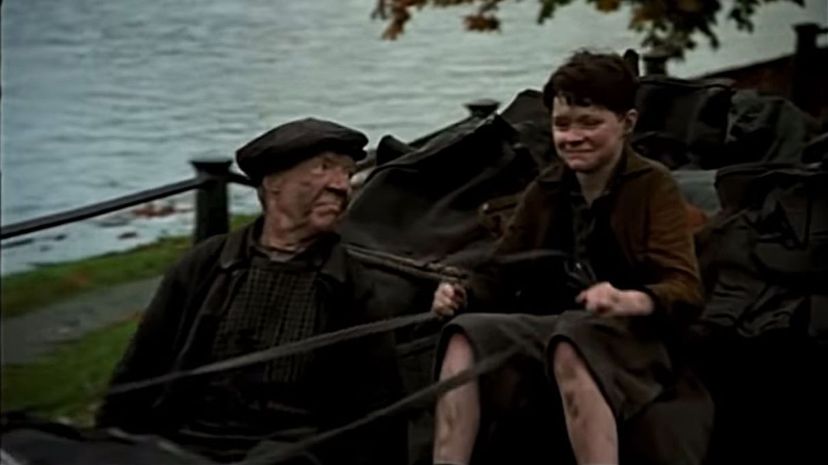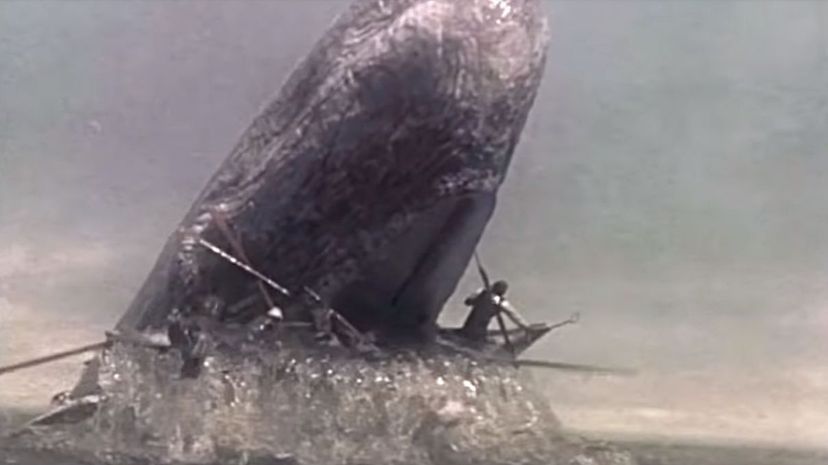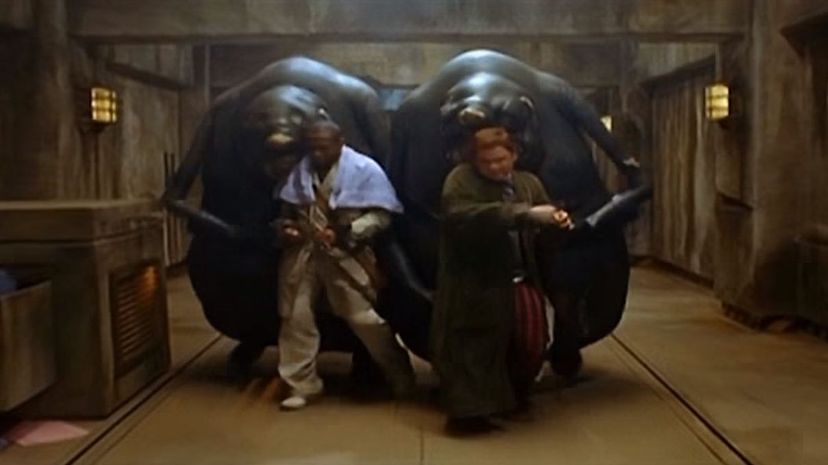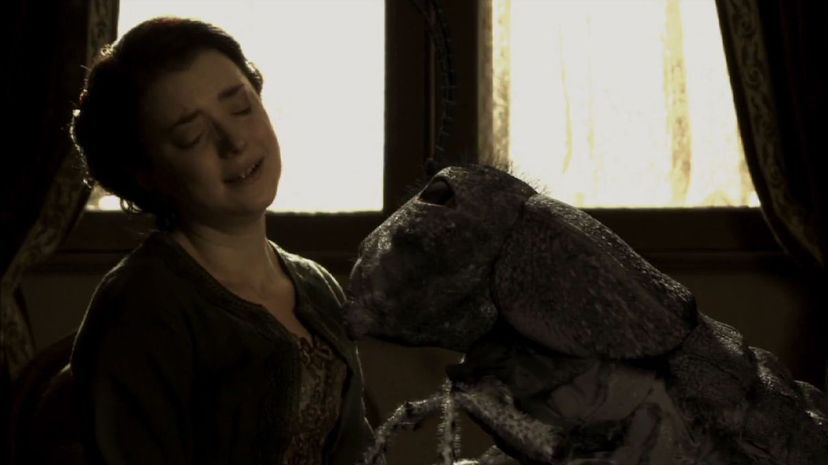
About This Quiz
In his 2000 memoir "On Writing," author Stephen King calls books a "uniquely portable magic." When you look at the number of books a writer like King has sold, you have to believe he's on to something. It's easy to take that magic for granted in the 21st century with the constant din of smartphones and social media screaming for our attention. Nevertheless, think of the implications of books as portable magic - entire universes, lives, histories and the innermost thoughts of strangers that you can carry around in your backpack or purse. A good book is a portal - a time machine if you will - that you can activate at any time. Open a book and the world melts away. The magic is real.
If you love books, this is probably as apparent to you as your nose, but if you don't read for pleasure, you're missing out on some of the only real magic left in the world. In this quiz, we're going to take a look back at some of the greatest word wizards in history and the spells that they've cast on generations of grateful readers. In no particular order and with no preference to genre, we've gathered 35 of the most popular books ever for your perusal. No doubt we're sure to have missed some great ones, maybe even your favorite. Don't worry, we're sure to get them next time. So, bookworms, here's our challenge: Can you guess the most popular books of all time from the plotline?

Louisa May Alcott's "Little Women," published in two volumes in 1868 and 1869, is a beloved classic of American literature. The book follows the lives of the four March sisters, Meg, Jo, Beth and Amy, as they grow to adulthood against the backdrop of the American Civil War.

Stephen King established himself as the undisputed master of horror with "The Shining." His third published novel, "The Shining" was based in part on the author's own struggle with alcoholism.

Margaret Atwood's 1985 novel "The Handmaid's Tale" takes place in a dystopian near future where the United States government has been overthrown and replaced with a fundamentalist military regime. The novel's protagonist is Offred, a handmaid whose duty is to bear children for infertile women.
Advertisement

"Gone With the Wind," the only novel by author Margaret Mitchell, is the story of the rich and spoiled Scarlett O'Hara, whose life of comfort is thrown into turmoil by the Civil War. Winning a Pulitzer Prize in 1937, the book became an Academy Award-winning film starring Vivien Leigh in 1939.

Harper Lee's 1960 novel "To Kill a Mockingbird" caused a sensation when it was released. The story of Scout, a young girl growing up in 1930s Alabama, the book explores themes of tolerance, race and justice in the segregated South. It was adapted as a successful film starring Gregory Peck in 1962.

J.K. Rowling went from struggling author to queen of a literary empire with the publication of "Harry Potter and the Sorcerer's Stone" in 1997. Aimed at children, the Potter books were just as popular with adults who anxiously awaited each installment in the saga of the young wizard.
Advertisement

F. Scott Fitzgerald's "The Great Gatsby" is considered the greatest novel of the Jazz Age. Initially published to mixed reviews and poor sales, Fitzgerald's 1925 novel found its audience after the author's death. Often found on high school reading lists, "The Great Gatsby" is an American classic.

J.R.R. Tolkien's 1937 novel "The Hobbit" is the tale of Bilbo Baggins, a respectable Hobbit who loves good food and a comfortable life. When a wizard and a group of dwarves invite him on an adventure, his world is never the same. "The Hobbit" lays the foundation for "The Lord of the Rings."

Jane Austen's "Pride and Prejudice" is an exercise in romance and irony set against the strict social mores of Georgian-era gentility. Endlessly adapted for film, TV and theatre, "Pride and Prejudice" is one of the most enduring and beloved works in the English Language.
Advertisement

Although many may be more familiar with the 1939 film adaptation of L. Frank Baum's uniquely American fairytale, "The Wonderful Wizard of Oz," the 1900 children's novel was an immediate phenomenon in its own right. At the behest of his young fans, Baum wrote 13 more Oz books between 1904 and 1920,

Science fiction pioneer H.G. Wells influenced generations of writers and filmmakers with his frightening 1898 novel "The War of the Worlds." Presented as a factual account by an unnamed narrator, the novel details the decimation of Victorian England by an invasion from Mars.

Vladimir Nabokov's 1955 novel "Lolita" is among the greatest and most controversial literary works of the 20th century. Told from the perspective of its protagonist, Humbert Humbert, the narrator details his obsession with the 12-year-old Dolores Hayes.
Advertisement

Hunter S. Thompson's semi-autobiographical novel "Fear and Loathing in Las Vegas" is a landmark of 20th century American literature. Written in Thompson's trademark Gonzo style, the novel, rooted in the framework of an assignment to cover a desert bike race, documents the fall of '60s idealism.

Author Frank McCourt won the 1997 Pulitzer Prize for Biography with his memoir "Angela's Ashes." In the book, McCourt's immigrant family returns to Ireland following the death of their youngest child to find that the Great Depression has taken an even worse toll on the old country.

Author Bret Easton Ellis shocked readers with this scathing and bloody critique of capitalism. Narrated by a young businessman named Patrick Bateman, the narrator details the banality of his daily life, his affinity for '80s pop culture and his penchant for committing grisly acts of murder.
Advertisement

J.D. Salinger created the ultimate mixed-up kid with Holden Caulfield, the young protagonist of his 1951 novel "The Catcher in the Rye." Frequently challenged for its raw language and adult themes, "The Catcher in the Rye" unflinchingly examines themes of anger and loss on the road to adulthood.

Among the greatest of American novels, Herman Melville's 1851 "Moby Dick" is the tale of Captain Ahab, an obsessed captain of a whaling ship and his vengeful quest to slay the white whale who took his leg. Rich in language and symbolism, the novel explores themes of madness, fate and freewill.

Joseph Heller's 1961 satire "Catch-22" is a scathing indictment of bureaucracy and the banality of war. In the novel, Captain Yossarian, a bombardier on a B-25 bomber stationed on the island of Pianosa off the Italian coast, struggles to maintain his sanity and his safety in the Second World War.
Advertisement

Author S.E. Hinton was only 15 when she began writing the beloved coming-of-age classic "The Outsiders." Chronicling the conflict between the lower class "greasers" and the rich "socs," Hinton's 1967 novel was adapted as a film by "The Godfather's" Francis Ford Coppola in 1983.

His last major work, "The Old Man and the Sea" served to reignite interest in Ernest Hemingway's writing and reestablished the troubled author as an American literary force. Winning the Pulitzer Prize for fiction, the short novel was critical in Hemingway's winning of the Nobel Prize for Literature in 1954.

First published anonymously in 1818 when the author was only 20, Mary Shelley's "Frankenstein" is a cornerstone of both horror and science fiction. An indelible piece of the cultural landscape, Shelley's novel has become shorthand for the theme of science run amok.
Advertisement

Often considered prophetic, George Orwell's final novel "Nineteen Eighty-Four" is the story of Winston Smith, an average worker who longs to rebel against the totalitarian government of Oceania. Set in a dystopian future, Orwell's vision remains relevant decades after its dated title.

Theatrical manager and author Bram Stoker created the ultimate Gothic horror novel and one of the most popular characters in literature with "Dracula." Published in 1897, Stoker's iconic vampire tale has spawned countless adaptations, homages, sequels and parodies across all media.

Kurt Vonnegut's 1969 novel "Slaughterhouse-Five" brilliantly melds science fiction with a poignant anti-war stance. Deeply philosophical, Vonnegut's novel presents a thoughtful examination of freewill. "Slaughterhouse-Five" has been frequently challenged because of its tone and frank language.
Advertisement

"Adventures of Huckleberry Finn" by Mark Twain, a sequel to his "The Adventures of Tom Sawyer," is one of the most challenged books in American literature. With a narrative composed of colloquial vernacular, the novel's use of rough language and racial epithets make this work perennially controversial.

Charles Dickens' 1859 historical novel of love and loyalty set against the backdrop of the French Revolution holds the distinction of being the best-selling work of fiction in history. Despite Dickens' expert plotting and characterizations, the book's historical accuracy is questionable.

William Golding's first novel, "Lord of the Flies" addresses the age-old problem of civilization versus savagery. When their plane crashes on a paradisiacal island after a wartime evacuation, a group of British schoolboys revert to primitive tribalism and violence.
Advertisement

This graphic novel from 1987 holds the distinction of being the only comic book to hold a place on Time magazine's list of the 100 Best Novels. Created by writer Alan Moore and artist Dave Gibbons, "Watchmen" was met with much acclaim from both comic fans and mainstream critics.

Judy Blume started a revolution in young adult literature with her 1970 novel "Are You There God? It's Me, Margaret." Controversial for its frank treatment of sensitive topics like religion, puberty and sex, Blume's novel tackles difficult issues with sensitivity and honesty.

Published under the pen name Ellis Bell, Emily Brontë's "Wuthering Heights" is a masterwork of setting, atmosphere and characterization. Exploring themes of cruelty, revenge and class, this novel initially challenged Victorian sensibilities but has since become a well-loved classic.
Advertisement

Writer Douglas Adams' "The Hitchhiker's Guide to the Galaxy" is a comedic adventure that combines the absurdity of Monty Python with the quirky and uniquely British sci-fi sensibility of "Doctor Who." First appearing as a BBC radio comedy, "The Hitchhiker's Guide" has been adapted across all media.

Published in 1915, author Franz Kafka's "The Metamorphosis" tells the story of Gregor Samsa, a weary traveling salesman who awakens one morning to find that he's become a giant, grotesque insect. Surreal, frightening and filled with pathos, "The Metamorphosis" defies interpretation.

Sylvia Plath's 1963 novel "The Bell Jar" is the story of Esther Greenwood, a woman who spirals into depression over the course of a summer as an intern with a major magazine. The novel mirrors much of the author's own tragic life. Sadly, Plath died by suicide shortly after the book's publication.
Advertisement

"Breakfast at Tiffany's" author Truman Capote spent six years researching and writing "In Cold Blood." Assisted by his friend Harper Lee (author of "To Kill a Mockingbird"), Capote spent six years writing and researching the 1959 murders of the Clutter family in Holcomb, Kansas.

John Steinbeck's "Cannery Row" functions more as a profile of the colorful characters who live near Monterey's sardine canneries than a traditional narrative. Composed of loosely related vignettes, the main story deals with Doc, a marine biologist who's much beloved by the denizens of Cannery Row.